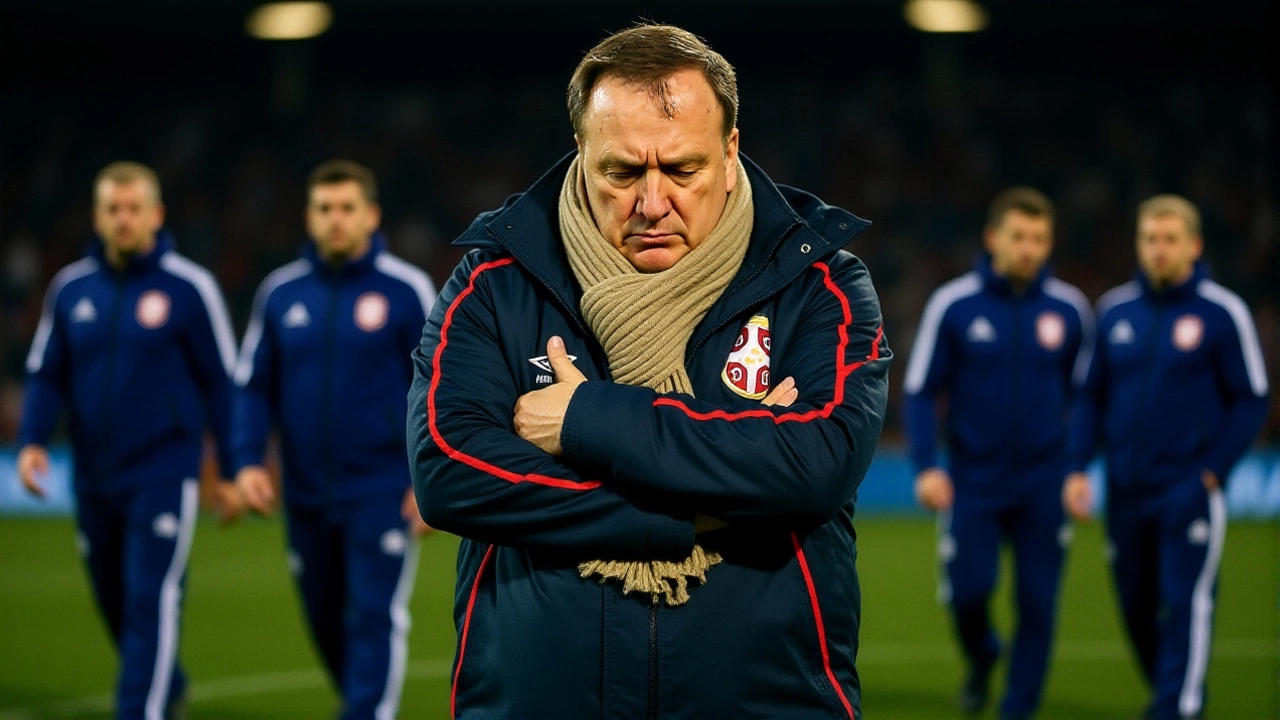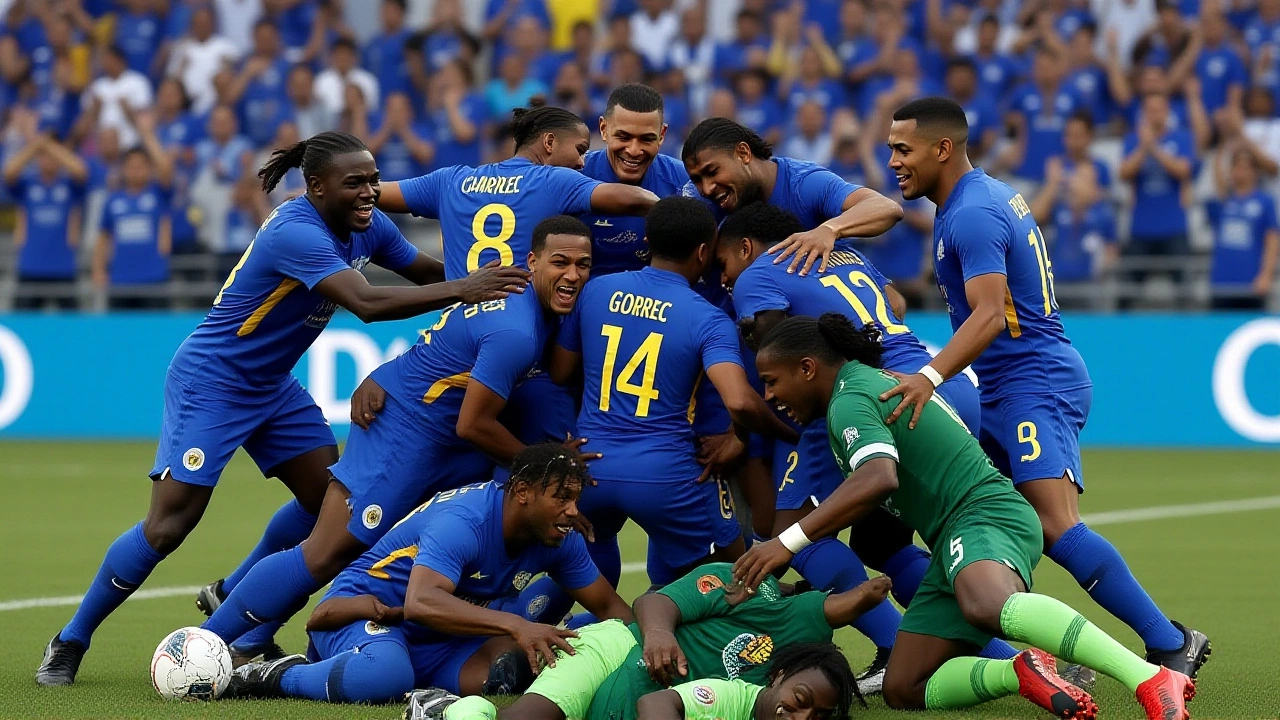On Tuesday, November 19, 2025, a 0-0 draw between Curaçao and Jamaica sent shockwaves through global football — not because of goals, but because of history. The result, sealed under the lights of an unnamed stadium in the Caribbean, clinched Curaçao’s first-ever berth in the 2026 FIFA World CupUnited States, Canada, and Mexico. And here’s the twist: at just 160,000 people, Curaçao is now the smallest sovereign nation in history to reach the tournament. Not since World War II has a country this tiny punched its ticket to football’s biggest stage.
A Nation Too Small to Be Believed
Curaçao, a Caribbean island nation within the Kingdom of the Netherlands, has long been a football underdog. Its population is smaller than many U.S. college towns. Its annual budget for football development is less than what top clubs spend on a single midfielder. Yet, on a night when Jamaica needed a win to leapfrog them in the Concacaf qualifying group, Curaçao held firm. No goals. No heroics. Just grit. And it was enough.The draw wasn’t just a result — it was a mathematical miracle. Curaçao entered the final matchday in fifth place, needing not just a win, but a combination of other results to go their way. When Trinidad and Tobago lost to Panama, and Canada drew with Honduras, the chain snapped into place. Curaçao, with 14 points from 10 matches, edged out Jamaica (13 points) on goal difference. The final whistle didn’t just end a match — it ended decades of near-misses.
What Makes This Historic?
Before Curaçao, the smallest nation to qualify was Iceland in 2018, with a population of 330,000. Then came Trinidad and Tobago in 2006 — 1.3 million people. Curaçao’s population? Roughly half of Iceland’s. Its land area? Just 444 square kilometers — smaller than New York City’s five boroughs combined. And yet, here it is: heading to the World Cup.The achievement defies every conventional football logic. There’s no professional league on the island. The national team trains mostly overseas. Players are scattered across Europe — from the Dutch second division to Belgian lower tiers. Their coach, Sergio van Dijk, a former Australian international of Dutch descent, took over in 2023 with a mandate: build resilience, not talent. He didn’t have money for analytics software. He had WhatsApp groups and late-night Zoom calls with players who worked construction jobs during the week and trained on sand pitches on weekends.

Why the World Took Notice
The Las Vegas Sun and AOL both ran stories on November 20, 2025, calling it a “historic achievement.” But neither gave the full picture. Why? Because the story was too big to fit in a headline. The ellipses in their articles — “smallest country by...” and “since World War...” — weren’t typos. They were editorial gasps. Journalists didn’t know how to quantify it. How do you describe a nation that defies scale?There’s no precedent. No database entry for “smallest nation to qualify.” FIFA doesn’t track it. But the numbers speak: Curaçao is smaller than any other qualifying nation since the World Cup began in 1930. Even microstates like San Marino and Liechtenstein — often cited as football’s smallest — never made it past qualifying rounds. Curaçao did. And they did it without a single goal in their final match.
What Comes Next?
The 2026 FIFA World Cup kicks off on June 11, 2026. Curaçao will be drawn into a group likely featuring heavyweights like Brazil, Spain, or Germany. They won’t win many games. But they won’t be there just to make up the numbers. Their players know this: they’re not just representing a tiny island. They’re representing every kid in the Caribbean who was told, “You’re too small to dream big.”The Curaçao Football Federation has already begun planning. They’ve secured a training base in Florida. They’ve hired a sports psychologist. They’ve reached out to Dutch clubs for loan deals. And they’ve started a crowdfunding campaign — not for equipment, but for jerseys with the names of every citizen who contributed to their journey. The goal? 160,000 names. One for each person.

More Than a Team — A Symbol
This isn’t just about football. It’s about identity. Curaçao has no seat at the United Nations. It doesn’t issue its own passports. But in football? It’s sovereign. It’s proud. And now, it’s on the world’s biggest stage.When the opening match kicks off in 2026, don’t look for the loudest crowd. Don’t look for the flashiest kits. Look for the players who’ve never played in a stadium with more than 10,000 seats — and now stand on the pitch of the Colosseum of football. They’re not underdogs. They’re pioneers.
Frequently Asked Questions
How does Curaçao’s population compare to other World Cup qualifiers?
Curaçao’s population of approximately 160,000 is less than half of Iceland’s (330,000), the previous smallest qualifier in 2018. It’s also smaller than the populations of 137 UN member states. For context, the U.S. city of Austin, Texas, has over 1 million residents — more than six times Curaçao’s size.
Has any non-sovereign territory ever qualified for the World Cup?
No. Only sovereign nations recognized by FIFA can enter. Territories like Puerto Rico, Greenland, or Gibraltar have tried but never qualified. Curaçao’s status as an autonomous country within the Kingdom of the Netherlands grants it separate FIFA membership — a rare exception that made history possible.
What’s the significance of the 0-0 draw against Jamaica?
The draw wasn’t about scoring — it was about survival. Jamaica needed a win to qualify. Curaçao needed only a draw, but only if other results went their way. When Trinidad and Tobago lost to Panama, Curaçao jumped ahead on goal difference. The match ended goalless, but the tournament outcome hinged on four other games played simultaneously across the region.
Why didn’t Curaçao qualify before this year?
Curaçao’s predecessor, the Netherlands Antilles, qualified for the 1974 World Cup — but only as a colonial entity. After the Netherlands Antilles dissolved in 2010, Curaçao’s federation was only granted full FIFA membership in 2011. Since then, they’ve come close three times — in 2018 and 2022 — but always fell short by a single point or goal difference.
Will Curaçao have home advantage in the 2026 World Cup?
No. The tournament is hosted by the U.S., Canada, and Mexico. Curaçao’s group stage matches will be played in North American cities. But their fan base is expected to travel in force — with estimates of over 10,000 fans already securing tickets, many flying from the Netherlands, the U.S., and other Caribbean islands.
What impact could this have on Caribbean football?
Curaçao’s success could trigger a funding surge across the region. Smaller nations like Suriname, Guyana, and Haiti may now see World Cup qualification as realistic. The Concacaf has already signaled plans to expand development grants for small federations, citing Curaçao as proof that resources matter less than structure and belief.
